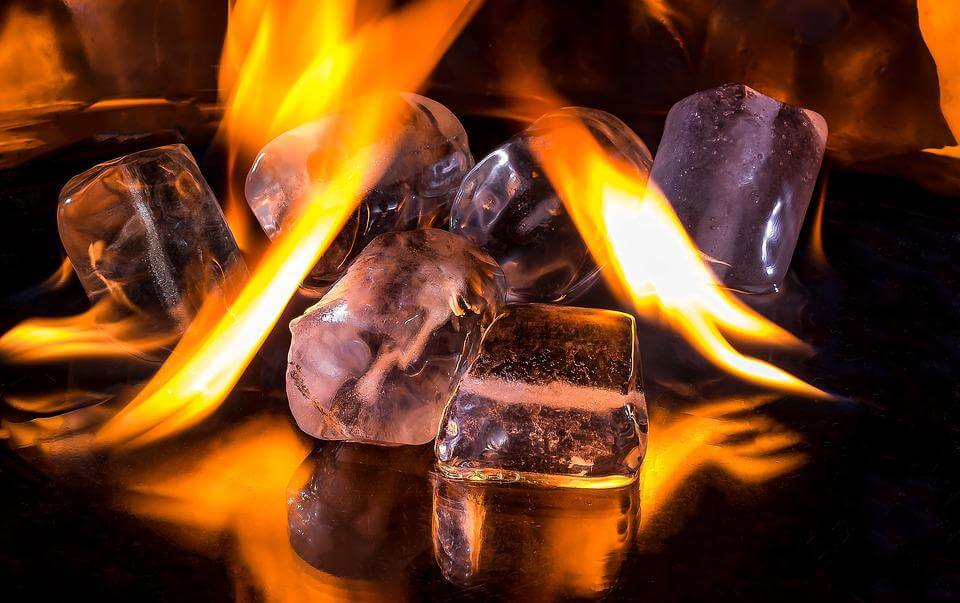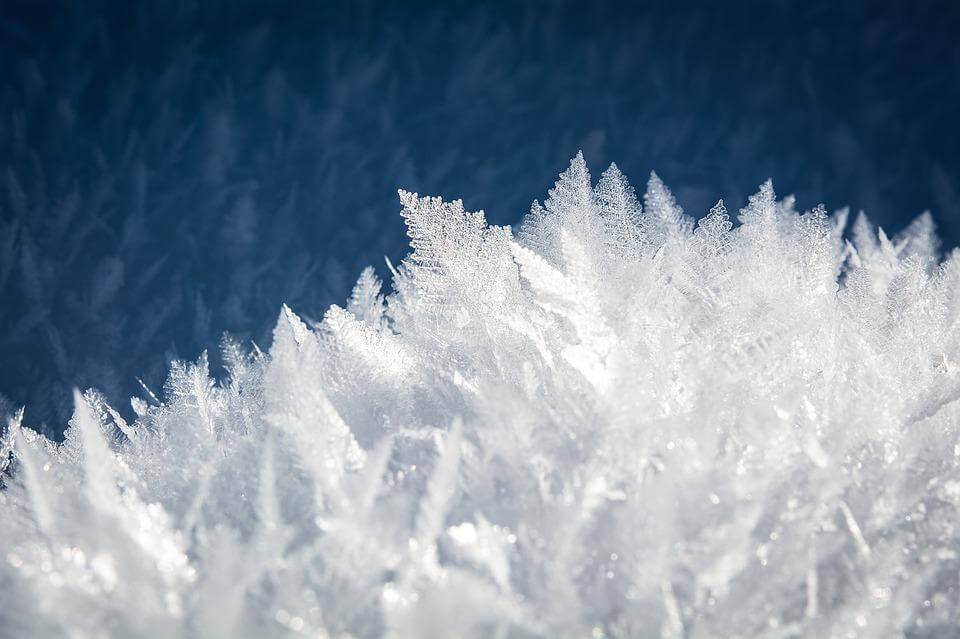What is melting and freezing? The change of volume in melting and freezing. What is the effect of pressure on melting point? The effect of impurites on freezing point.

Source : pixabay.com
MELTING (fusion)
Melting is to change from a solid state to a liquid state. When a solid melts its particles move apart from their fixed positions and move around each other more freely in the liquid. The heat given off during melting makes the particles vibrate faster and break away from each other. The heat needed to change 1 g of a solid to liquid form without changing its temperature is called the Latent Heat of Fusion of the solid.
Melting takes place at a definite temperature. The Melting point of a solid is the temperature at which the solid begins to melt. At the melting point a substance can exist in both the solid and liquid states. Each solid has its own melting point. The melting point is one of the characteristic properties of a solid. The amount heat needed to melt a given mass of a solid which is at its melting point is:
Q = M . LH(f)
- M : mass
- LH(f) : Latent heat of fusion
To heat a solid to its melting point is not enough to melt it. To change its physical state from solid to liquid, heat (undetected) must be given to it. When a solid gains heat the average kinetic energy of its molecules increase and its temperature rises. The heat given to a solid at its melting point is used to overcome the forces of attraction between its particles.

Source : pixabay.com
FREEZING
Freezing is the change from liquid state to solid state. It is the reverse process of melting. The heat gained in melting is given off in freezing. The latent heat of freezing is the heat given off when 1 g liquid at its freezing point is changed to 1 g solid without changing its temperature.
- L.H of freezings = L.H of fusion
- freezing point= melting point
Since heat is given off during freezing, a freezing liquid warms up its surroundings. Melting is a cooling process. Iceboxes are made according to this principle.
THE CHANGE OF VOLUME IN MELTING AND FREEZING
Most substances expand on melting and contract on freezing. Water is an exception. Water expands on freezing and ice contracts on melting. The solids that expand on melting sink in their own liquids. A piece of solid copper sinks in liquid copper. The solids that contract on melting float in their own liquids. Ice floats in water.
THE EFFECT OF PRESSURE ON MELTING POINT
Pressure raises the melting point of the solids which expand on melting. The molecules in a solid are closer to each other than in the liquid form of the some substance. When the substance is squeezed it will solidify at a higher temperature than normal. Most substance behave like this, except water, because it expends on freezing. Pressure lowers the melting points of the solids that contract on melting.
Under pressure, it is easier to melt ice and more difficult to freeze water. The melting point of ice is lowered as the pressure on it increases and, even below 0°C, the ice changes into water. It will change back into ice as soon as the pressure is decreased.
THE EFFECT OF IMPURITES ON FREEZING POINT
When a substance is dissolved in a liquid the freezing point of the solution is lower than that of the original liquid. This is why salt is sprinkled on icy roads and antifreeze is added to car radiators to lower the freezing point of water.